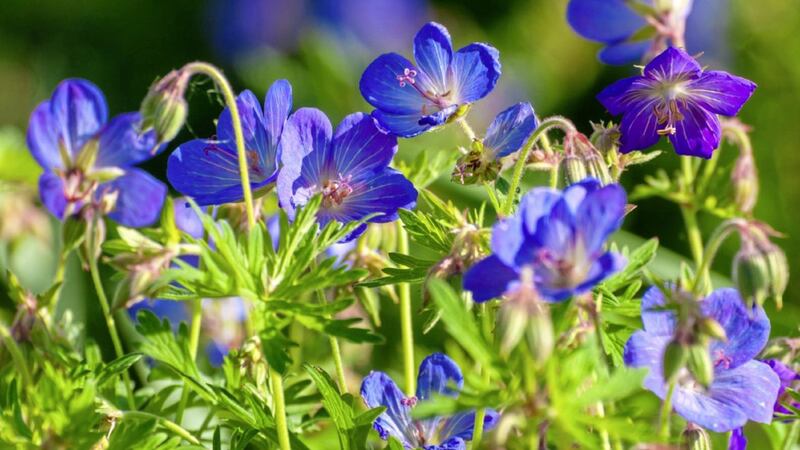If only everything in life were as reliable as a geranium...
SURVEYING the garden as midsummer approaches I’m often reminded of the gardeners’ old adage: "If in doubt, plant a geranium." Before explaining the reasons for this wisdom, however, it’s first important to clarify what a geranium actually is. Many of you will no doubt assume I’m referring to what I know to be bedding and occasional house plant often sold in garden centres as ‘zonal geraniums’. These are actually pelargoniums, a tender plant that is native of southern Africa. Plant these in your herbaceous border and you’ll be lucky if its soft flesh survives the ravages of snails and slugs long enough to be killed off by the first frosts. With an inside overwintering, pelargoniums will survive from one year to the next but I must confess it’s not a plant I’m that familiar with – beyond its aromatic qualities.
Its namesake, on the other hand, I’m well acquainted with. Find a ‘true’ geranium or what’s commonly known as a cranesbill – actually a distant relative of the pelargonium – and you’ll find a plant descended from our own native species. Robust and colourful, these geraniums will grow pretty much anywhere and more than adequately fill that gap in your display. Neither shy or boisterous - neither an anthem nor an album filler - the geranium is a voluminous plant that likes to spread, but without imposing itself thuggishly.
Some of the cranesbills are relatively common natives, such as cut-leaved cranesbill (Geranium dissectum), while others like the meadow cranesbill (Geranium pratense) less so. What they all share are arresting five-petalled flowers, coloured white, pink, purple or blue, with the flowers on the cultivars tending to be more profuse
The smaller hardy geraniums are best suited to rock gardens, pots and hanging baskets or at the front of borders. They can also make handy ground cover plants. Geranium ‘Ann Folkard’ produces pretty, magenta coloured flowers with black centres from mid-summer to mid-autumn. If space allows, it can reach a spread of 1m or more. G × oxonianum 'Wargrave Pink' and G. endressii are the go to geraniums if bright pink is your thing. The trumpet shaped flowers on the latter are on show right through from early summer to early autumn, and have an iridescent silvery sheen to them. For a burst of midsummer colour try Geranium X magnificum, a gem which produces rich violet flowers to 5cm across.
I’ve found the dark leaved varieties – ‘Midnight Reiter’ for instance – slightly more difficult to grow, but worth looking after as you’ll be well rewarded with a nice contrast of chocolatey-purple leaves and violet-blue flowers.
One extra special geranium to look out for is ‘Rozanne’, a plant that has picked up countless accolades since it first appeared in the 1980s. Named after Mrs Rozanne Waterer, who along with husband and fellow keen gardener Donald noticed one particular plant in their Somerset garden was a stronger grower, with larger leaves and flowers than other geraniums, and a flowering period that extended through most of the summer. ‘Rozanne’s’ violet blue flowers have gone on to become a big favourite among gardeners, shifting millions of units along the way and picking up picked up a Royal Horticultural Society Award of Garden Merit.
The violet-blue flowers of this super geranium looked a lot like those of fellow geranium ‘Buxton’s Variety’ but were twice as large. It’s also been compared to G. ‘Johnson’s Blue’, which can match ‘Rozanne’ for colour of flower but comes nowhere near in terms of their longevity.








